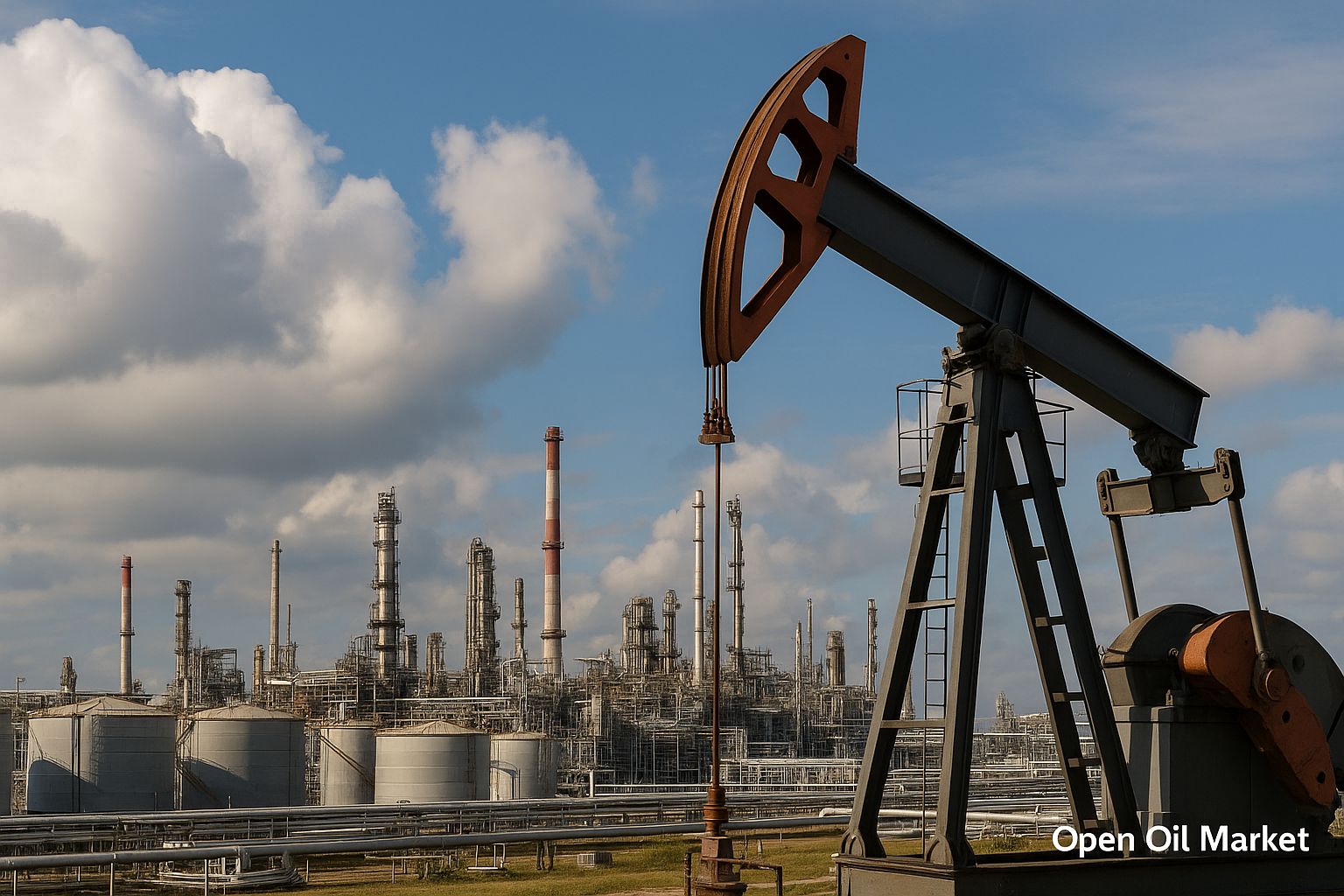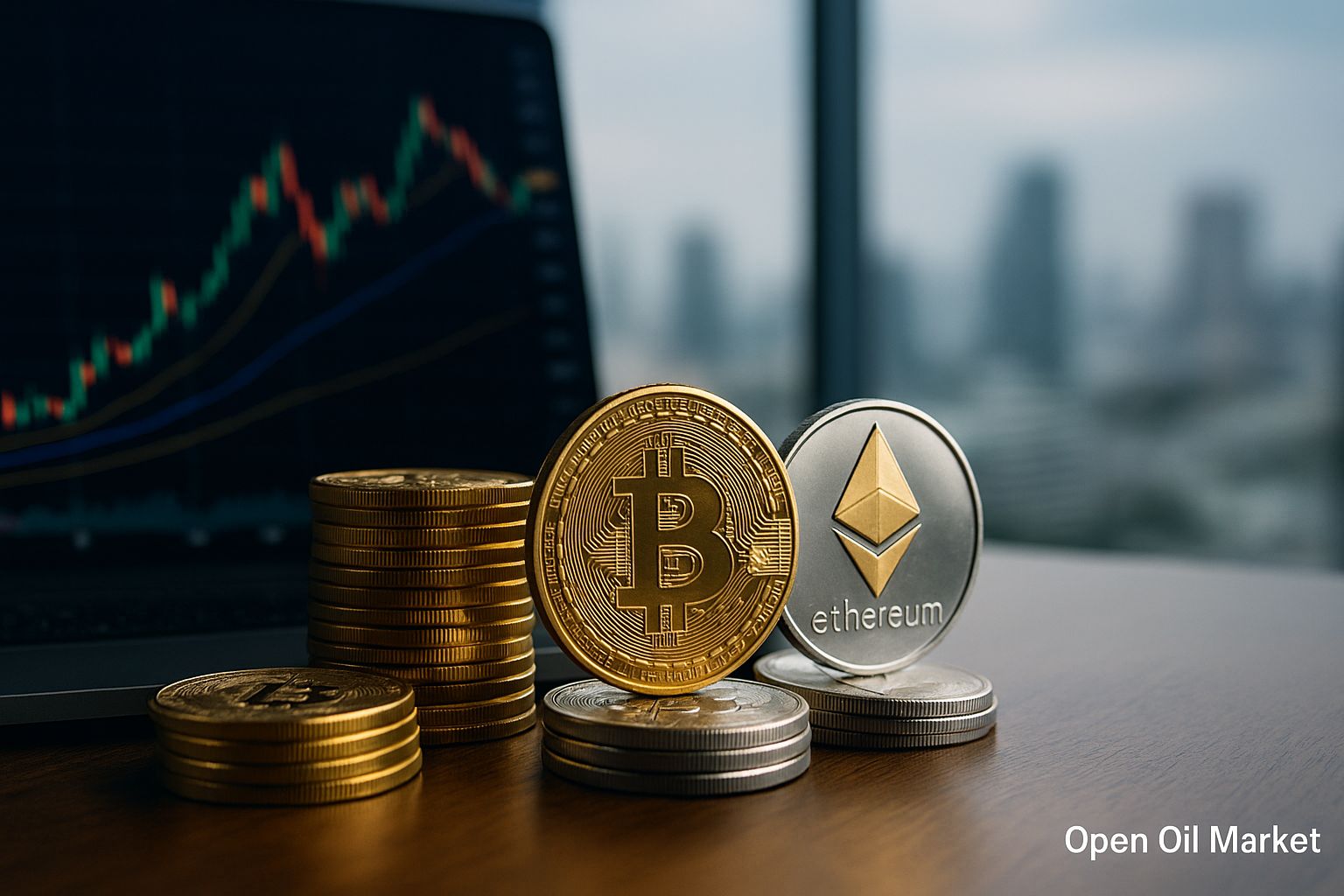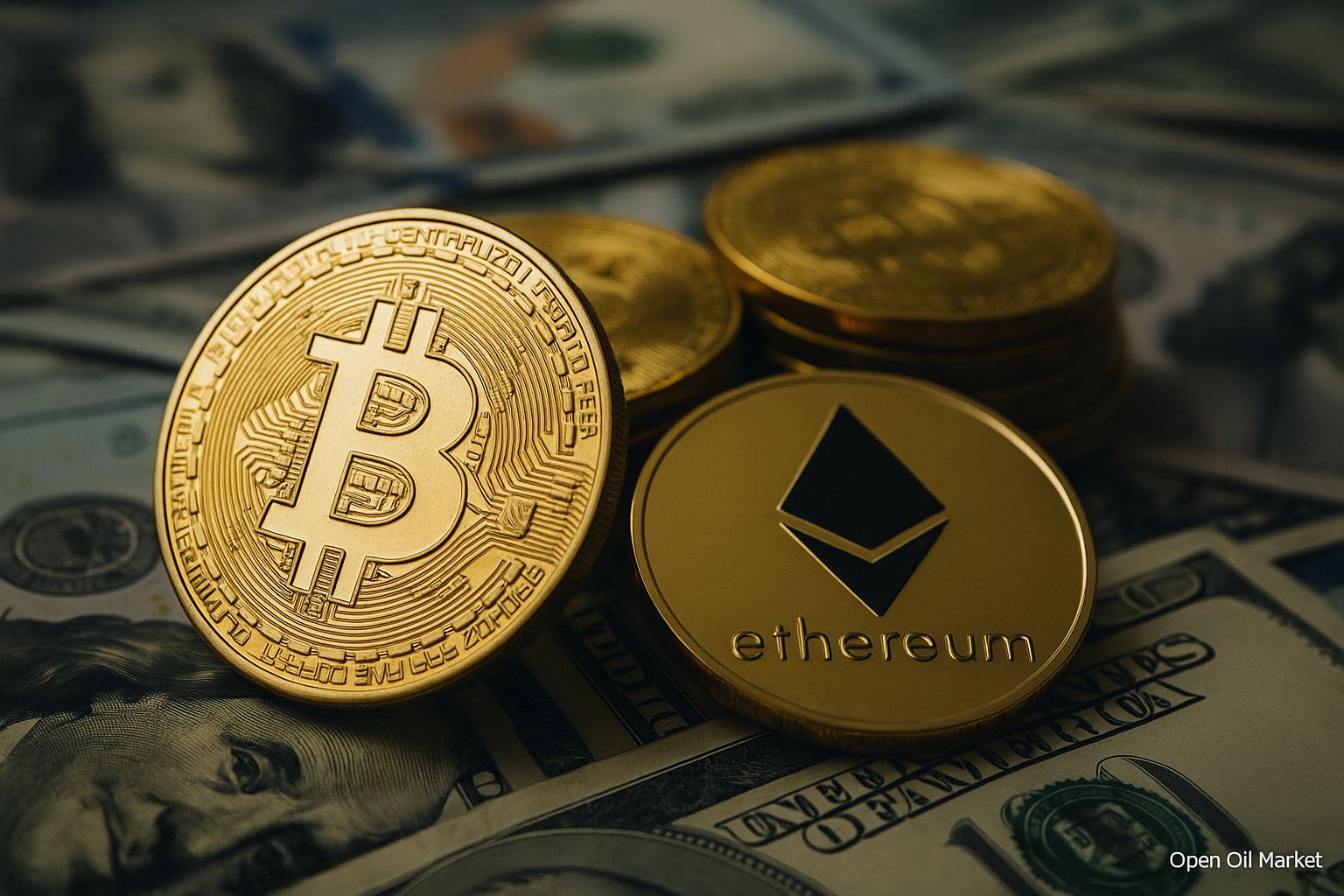
Current News in the Oil and Gas Industry and Energy as of November 12, 2025: Sanction Pressure on Russia, Oil Price Stability, Europe’s Confidence in Gas Supplies, Renewable Energy Development, and Stabilization of the Russian Fuel Market
As of November 12, 2025, the global fuel and energy complex continues to operate under conditions of heightened geopolitical tension, although signs of adaptation to new realities are emerging. The sanctions confrontation between Russia and the West continues to impact the industry: the European Union has approved yet another, 19th set of restrictions aimed at reducing revenues from the Russian energy sector (including a plan to gradually phase out imports of Russian gas by 2026-2027). The United States imposed sanctions against major Russian oil and gas companies at the end of October, and their effects are already being felt – for example, Lukoil announced force majeure on a major oil field in Iraq due to the freezing of payments under US sanctions. At the same time, Washington demonstrates selective flexibility: after negotiations with Hungarian Prime Minister Viktor Orban, US President Donald Trump agreed to grant Budapest a one-year exemption from sanctions for the purchase of Russian oil and gas. This move supports cautious hopes for targeted easing of energy restrictions for certain allies, despite the overall sanctions pressure.
In such conditions, global commodity markets remain relatively stable. Oil prices are holding at a moderate level: the benchmark Brent blend is trading in the mid-$60s per barrel (around $63-65), significantly below summer peaks. This reflects expectations of an oversupply by the end of the year – high production from OPEC+ and record volumes of oil from the U.S. are offsetting the slowdown in demand growth, creating a bearish backdrop for the market. Nevertheless, geopolitical risks and uncertainties surrounding sanctions add a slight premium to oil prices, preventing them from falling further.
The European gas market is entering winter confidently. Gas underground storage facilities (UGS) in EU countries are filled at approximately 83-85%, which, although lower than last year’s levels, provides a substantial safety margin in case of cold weather. Diversified imports of liquefied natural gas (LNG) from the U.S., Qatar, and other exporters largely compensate for the sharp reduction in pipeline supplies from Russia. Wholesale gas prices in Europe remain significantly below the crisis peaks of 2022; the volatility of recent months is primarily due to weather factors. In the absence of abnormal cold, the EU has every chance of getting through the upcoming heating season without price shocks.
Meanwhile, the global energy transition is gaining momentum. In 2025, record growth in renewable energy capacity continues – from large solar parks to offshore wind farms. Many countries are recording new historical peaks in green electricity generation, although ensuring the reliability of power systems still relies on traditional generation (gas, coal, nuclear). Innovative trends are solidifying: worldwide sales of electric vehicles are accelerating, new hydrogen projects are being launched, and energy companies are investing in energy storage systems and the digitalization of networks. On the one hand, these processes reduce long-term demand for fossil fuels; on the other hand, they require modernization of infrastructure and additional capacity reserves.
In Russia, emergency measures to stabilize the domestic fuel market, adopted in the fall, are yielding results. The export restrictions on gasoline and diesel, extended until the end of the year, alongside the adjustment of damping subsidies for refineries, have helped bring wholesale prices down and eliminate shortages in problematic regions. Following a price surge in gasoline in August, the situation at gas stations has normalized; the government is already considering the cautious lifting of export barriers in early 2026, provided stable prices for domestic consumers are maintained.
Key Insights
- Oil: High supply from OPEC+ and record production in the U.S. keep oil prices in a moderate range (~$60-65 per barrel Brent) against the backdrop of slowing global demand growth.
- Gas: Europe enters winter with significant gas reserves (about 85% UGS fill level); record LNG imports from the U.S., Qatar, and other countries compensate for declining pipeline supplies and prevent a sharp price increase.
- Sanctions and Geopolitics: New measures from the U.S. and EU increase pressure on the Russian energy sector, forcing companies and investors to adapt and redirect supplies. Simultaneously, Washington's decision to exempt Hungary from some restrictions signals the possibility of exceptions for allies, despite the overall sanctions pressure.
- Asia: China and India remain key drivers of hydrocarbon demand. A slowdown in the Chinese economy restrains consumption growth, while India, despite Western pressure, continues to purchase Russian oil to meet its growing demand. Both countries are concurrently ramping up investments in renewable energy to enhance their energy security.
- Electricity and Renewables: Global generation from renewable sources in 2025 is reaching new records – wind and solar capacity are growing rapidly. However, the variable nature of green energy requires the development of storage systems and support for base generation (gas, coal, nuclear) to ensure reliable power supply.
- Fuel Market in Russia: In Russia, export restrictions on gasoline and diesel have been extended, which, along with adjustments to refinery subsidies, stabilized domestic prices after a summer spike. Additional fuel volumes are directed to the domestic market, eliminating shortages at gas stations; a gradual lifting of export barriers in 2026 is under discussion, contingent on price stability.
Oil Market: Oversupply Pressures Prices amid Subdued Demand
Price Situation. By mid-November, global oil prices remain relatively low following a drop in the fall. The North Sea Brent blend is hovering around $64 per barrel, roughly 10-15% below early summer levels. The market balance has shifted toward oversupply: participants are anticipating excess supply by the end of the year. While geopolitical factors (Middle Eastern conflicts, sanction risks) add a slight risk premium, overall sentiments remain cautious and bearish, preventing prices from either sharply rising or plunging.
- Supply: OPEC+ countries are gradually increasing production after a period of strict limitations. At an extraordinary meeting in early November, the alliance agreed to a symbolic increase in quotas – by around 137,000 barrels per day starting in December – while deferring more significant steps until the first quarter of 2026 (effectively announcing a pause on further production growth at the beginning of next year). Simultaneously, U.S. oil production reached a historical maximum of approximately 13 million barrels per day due to the shale boom and regulatory easing. High volumes of supply from OPEC+, the U.S., and several other producers (including the resumption of oil exports from Kurdistan in Iraq after a lengthy hiatus) are saturating the oil market.
- Demand: The growth rate of global oil consumption has noticeably slowed. According to the International Energy Agency (IEA), demand is expected to increase by less than 1 million barrels per day in 2025 (compared to a gain exceeding 2 million barrels per day in 2023). OPEC’s forecast also suggests moderate growth (~1.3 million barrels per day). The slowdown in the global economy – particularly in China – alongside the effects of previously high prices (which encouraged energy conservation and efficiency improvements) is restraining consumption. The accelerated rollout of electric vehicles and a shift to more fuel-efficient engines are also gradually reducing demand for gasoline and diesel.
- Stocks: Commercial oil and petroleum product inventories in non-OECD countries have risen in recent months, reflecting the market surplus. In the U.S., strategic oil reserves began systematic replenishment this fall amid record production and relatively low prices. Additionally, some previously restricted volumes have returned to the global market: for instance, exports through the Turkish port of Ceyhan from Iraqi Kurdistan have resumed, and supplies from Iran have increased. The accumulation of stocks exacerbates pressure on prices, signaling sufficient oil supply even considering sanctions barriers.
Outlook. The oil market is approaching the end of the year in a state of relative equilibrium, but with a clear trend toward oversupply. In the absence of significant unforeseen events, prices are likely to remain within a restrained corridor until the beginning of 2026. Concerns over supply disruptions or escalation of geopolitical conflicts prevent prices from crashing; however, expectations of further supply growth from OPEC+ and shale companies foster predominant bearish sentiments. Oil companies are focused on controlling costs and hedging risks, while refiners are optimizing product mix (gasoline, diesel, jet fuel) and logistics under conditions of moderate prices and intense competition.
Gas Market: Europe is Prepared for Winter Thanks to Reserves and LNG
Situation in Europe. The natural gas market remains relatively stable despite the approach of winter cold. European countries have succeeded in building significant reserves in advance: by early November, the average UGS fill level in the EU was around 85%. Although this is somewhat lower than last year's record levels, such high reserves provide a solid safety buffer. Successful diversification of import sources has compensated for the reduction in Russian pipeline gas: in 2025, LNG supplies to Europe hit all-time highs thanks to high export volumes from the U.S., Qatar, Australia, and other countries, and a decline in demand for gas in Asia during the first half of the year allowed additional LNG shipments to be redirected to European terminals.
- Reserves and Import: The high fill level of storage facilities, coupled with the continued influx of LNG, means that Europe is entering the heating season well-supplied with gas. An additional favorable factor has been the relative weakening of competition for LNG from Asia – for example, China’s gas imports decreased over the year, temporarily freeing up some supplies for the European market. As a result, even with a reduction in pipeline gas supplies from the east, European consumers are not currently experiencing fuel shortages.
- Prices: Thanks to accumulated reserves and alternative supplies, European gas prices remain at levels incomparable to the crisis peaks of 2022. In recent months, spot prices have fluctuated within a moderate range (for reference: around €30 per MWh at the Dutch TTF hub), responding mainly to weather changes and consumption levels. If the upcoming winter is not extremely cold, and Asian buyers do not trigger a price spike by competing for spot LNG shipments, the European gas market has a high chance of navigating the season without sharp price fluctuations.
- Demand and Generation: Measures to improve energy efficiency, the replacement of gas with renewable sources, and relatively weak industrial activity are restraining domestic gas consumption in Europe. Nevertheless, gas remains a key balancing fuel in electricity generation. During drops in output from wind or solar power plants, EU power systems increase the share of gas (and sometimes coal) generation. For instance, this past autumn, a prolonged period of low wind in Northern Europe forced energy companies to significantly ramp up gas generation compared to last year's levels to compensate for the shortfall in green electricity.
Markets and Risks. Overall, the European gas market is demonstrating resilience and adaptability. Traders and energy companies are currently paying particularly close attention to weather forecasts, consumption levels, and schedules for incoming LNG tankers. A key short-term risk is an unexpectedly harsh winter: a sudden cold snap could lead to increased gas withdrawals from storage and push prices upward. Additionally, the situation in Asia remains an important factor: a recovery in Asian demand for LNG (for instance, due to economic recovery in China or Japan) could intensify competition for available volumes. Nevertheless, as of now, Europe’s safety reserves are sufficient, and under average weather conditions, the gas market is likely to finish winter without significant upheaval.
Electricity Sector: Supply Stability and Interest in a "Nuclear Renaissance"
In the electricity sector in 2025, no significant disruptions occurred – major power systems managed to ensure reliable supply to meet the growing demand. Global electricity consumption continues to rise and is projected to reach a new record by year-end. This growth is driven by both economic expansion (primarily in developing countries) and the accelerated electrification of transport and industrial sectors. Despite a substantial increase in load, energy companies and grid operators are maintaining control: reserve capacities have been mobilized, and the repair schedules for generating equipment and grid infrastructure have been optimized to avoid outages during peak consumption hours.
One of the main priorities for governments has become energy security. In light of past crises, many countries have revised their plans for phasing out capacity: some have pushed back the closure dates for coal-fired power plants, while others are discussing extending the operational life of existing nuclear reactors. In fact, we can speak of an emerging "nuclear renaissance." For example, Japan and South Korea are restarting previously halted nuclear power plants, while new units are being built or planned in China, India, the UK, and France. Even some EU countries, which were previously planning a complete phase-out of nuclear energy, are considering extending the operation of existing reactors, given their role in stable power supply and achieving climate goals.
Thus, the electricity sector is currently characterized by a dual picture: on one hand, the industry is rapidly "greening" through renewable energy sources, while on the other, the significance of traditional base-load capacities is increasing to ensure system stability. The long-term trend points to further increases in the share of electricity in global energy consumption (as transport, heating, and industry continue to electrify), meaning that reliability of electrical networks, the creation of strategic capacity reserves, and infrastructure modernization will remain on the agenda. Investors are positively evaluating initiatives for the development of smart grids and energy storage systems aimed at smoothing peak loads and integrating variable generation from renewables.
Renewable Energy: Record Growth in Capacity and Variability Challenges
The renewable energy sector is experiencing accelerated development in 2025, setting new records. According to preliminary estimates from industry agencies, over 300 GW of new renewable capacity has been commissioned globally in the year – one of the highest figures in history. This growth is primarily driven by solar and wind power plants: large projects are being implemented in China, the U.S., India, the Middle East, and Europe. Many countries are reporting new maximums for green generation. For example, in Spain, Germany, and several other states, the share of energy from wind and solar exceeded 50-60% on certain days, while Australia and some EU countries periodically cover their daily consumption entirely with solar generation.
However, such rapid progress also reveals problems. The variable nature of renewable sources – dependence on weather and time of day – still poses challenges for energy systems. During periods of calm weather or cloudiness, renewable generation drops sharply, forcing the use of backup capacities in gas, coal, or nuclear (as noted, similar situations occurred in Europe this autumn during prolonged calms). To smooth these fluctuations, substantial energy storage systems are necessary. In 2025, investments in industrial batteries, hydrogen-based energy storage projects, and the construction of pumped storage plants are expanding. However, existing systems are currently insufficient, and experts urge for their accelerated implementation.
Despite these challenges, the trend remains unchanged: renewable energy is capturing an increasing market share. Alongside environmental goals, economic efficiency has become a crucial driver: the cost of producing electricity from new solar and wind installations in most regions is already comparable to or lower than that of traditional thermal power plants. Moreover, the adjacent green economy sector is growing – in 2025, records were set in the sales of electric transport and in the installation of distributed generation systems (such as residential solar panels). All of this indicates the beginning of qualitative changes in the global energy balance, although the path to a fully carbon-neutral system will still require significant investments and technological breakthroughs.
Coal Sector: Long-term Decline in Role amid Price Stabilization
The global coal market in 2025 is influenced by a sustained trend toward reduced use of this fuel in energy. Analysts note that global coal consumption has plateaued and will likely remain around current levels with a potential downward trend in the coming years. After a record 2024 (when demand reached an all-time high of approximately 8.8 billion tons), a slight decline is observed in 2025 due to developed countries actively replacing coal with cleaner sources. Prices for thermal coal have stabilized at relatively low levels compared to the peak values of two years ago – due to the absence of shortages and excess production capacities.
Many countries continue to announce policies to phase out coal generation. In several developed nations, timelines have been indicated for closing the last coal-fired power plants by the 2030s-2040s. In developing economies, where coal remains a significant part of the energy balance (e.g., India, China, Indonesia), the focus is on emission reduction technologies and a gradual decrease in coal’s share as renewable sources are scaled up. Already, the growth in renewable capacity in many regions is outpacing the commissioning of new coal plants. Investors are increasingly cautious about the coal sector due to high climate risks and tightening environmental agendas.
Short-term spikes in coal demand are still possible due to specific conditions. For example, during the summer of 2025, amidst extreme heat and rising electricity consumption in Asia, some countries temporarily increased their imports of thermal coal. In August, global coal shipments for power stations reached their highest level since late 2024 due to increased purchases from China and other Asian countries. However, by autumn, the situation returned to normal: demand in Asia slightly decreased due to mild weather and economic conditions (in India, for instance, coal-generated electricity in October fell by 13% year-on-year due to abundant rains and weak industrial demand). Thus, one-off spikes do not negate the downward trend. It is expected that the share of coal in global generation will consistently decrease, and any price increases for coal will be temporary and quickly neutralized when conditions normalize.
Overall, the coal sector is undergoing structural transformation. Companies are required to either diversify towards other resources or invest in cleaning technologies to remain competitive. In the short term, the coal market is expected to remain relatively balanced: supply is sufficient, and demand is gradually shifting downward. The key unknown for coal producers remains the speed of energy transition – the more actively countries introduce alternative capacities, the faster coal will lose its positions on a global scale.
Product and Refining Market: Surplus Capacity and Stable Prices
By the end of 2025, the global petroleum product market is characterized by stable supply and the absence of sharp imbalances. Prices for main fuel types (gasoline, diesel) have decreased compared to last year’s peak levels, reflecting the drop in oil prices and the lack of shortages in key markets. Even jet fuel, whose demand is recovering as international air travel revives, remains significantly cheaper than during the price surge of 2022-2023. However, the situation for refining companies is not straightforward: rising costs for raw materials and energy sources, along with a structural decline in demand for traditional fuels in developed countries, are keeping refinery margins under pressure.
- Supply: The commissioning of new refining capacities in the Middle East and Asia in recent years has significantly increased global fuel supply. Large modern refineries in China, the Gulf states, and Southeast Asia have reached full capacity, adding millions of tons of gasoline, diesel, and petrochemical feedstocks to the market. Concurrently, several outdated refineries in Europe and North America have either reduced processing or been closed due to low profitability and strict environmental regulations. As a result, total global refining capacities currently exceed demand levels, ensuring adequate supply on the international market.
- Demand: Gasoline consumption is stagnating or even declining in developed economies as the electric vehicle fleet grows and the fuel efficiency of internal combustion engine vehicles improves. Demand for diesel fuel is also under pressure: the transport sector and industry are implementing more efficient technologies and transitioning to alternative energy sources (gas, electricity, biofuels). The only segment observing noticeable growth in consumption is aviation fuel. With the revival of international tourism and business activity, the usage of jet fuel is increasing, although globally it has yet to return to pre-crisis levels of 2019.
- Regulation in Russia: In the Russian fuel sector, the policy of strict control over domestic prices continued in the fall of 2025. The government extended a temporary ban on the export of gasoline at least until the end of the year (with an option for extension into 2026), while diesel exports are only permitted under the condition of full supply to the domestic market – effectively maintaining quantitative export restrictions. Concurrently, the damping compensation mechanism for refineries was adjusted: the price threshold for compensation to be significantly reduced was raised. This diminishes the attractiveness of exporting fuel at high global prices, encouraging oil companies to direct products to the domestic market. Additionally, more volumes of gasoline and diesel were allocated from state reserves to supply those regions that faced acute shortages in the summer – these measures have helped normalize the retail situation.
Outcomes for Russia. The series of measures taken has managed to stabilize the situation in the domestic fuel market by November. Wholesale prices for gasoline and diesel, which reached record highs in August, have significantly receded and are now holding within a narrow corridor. Retail prices have also stopped rising rapidly; although a liter of fuel is still more expensive than a year ago, the pace of price increases has considerably slowed. Gas stations in remote and southern regions (e.g., Crimea, the Far East), where the situation was most tense in summer, are now supplied with the necessary fuel volumes. The harvest campaign, which previously fueled diesel demand, has successfully concluded. Experts note that if oil prices remain at their current low level, the Russian government could cautiously move towards easing export restrictions by early 2026. However, such steps will only be feasible under the condition of full saturation of the domestic market and maintaining control over fuel prices for end consumers.




